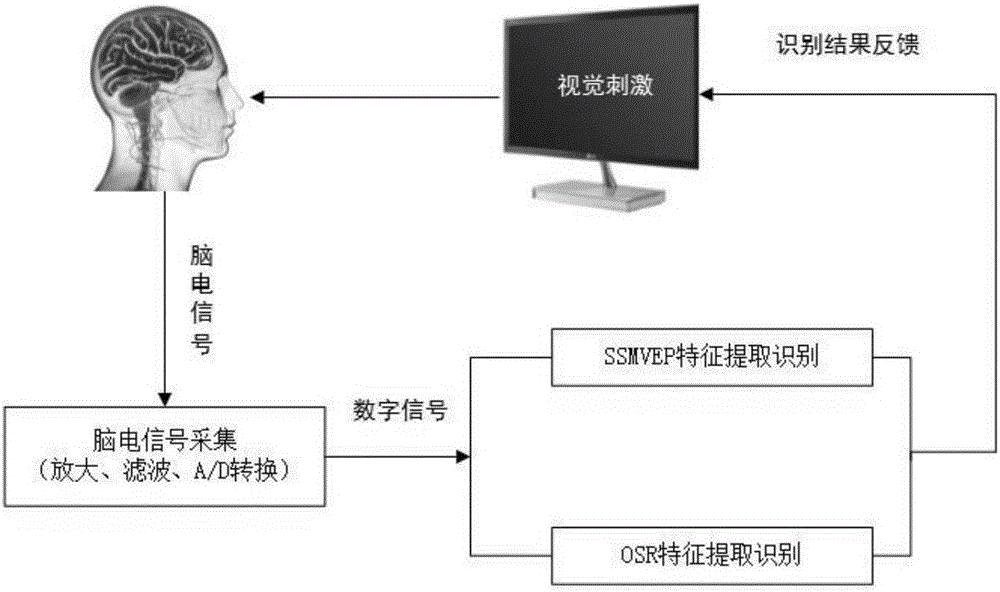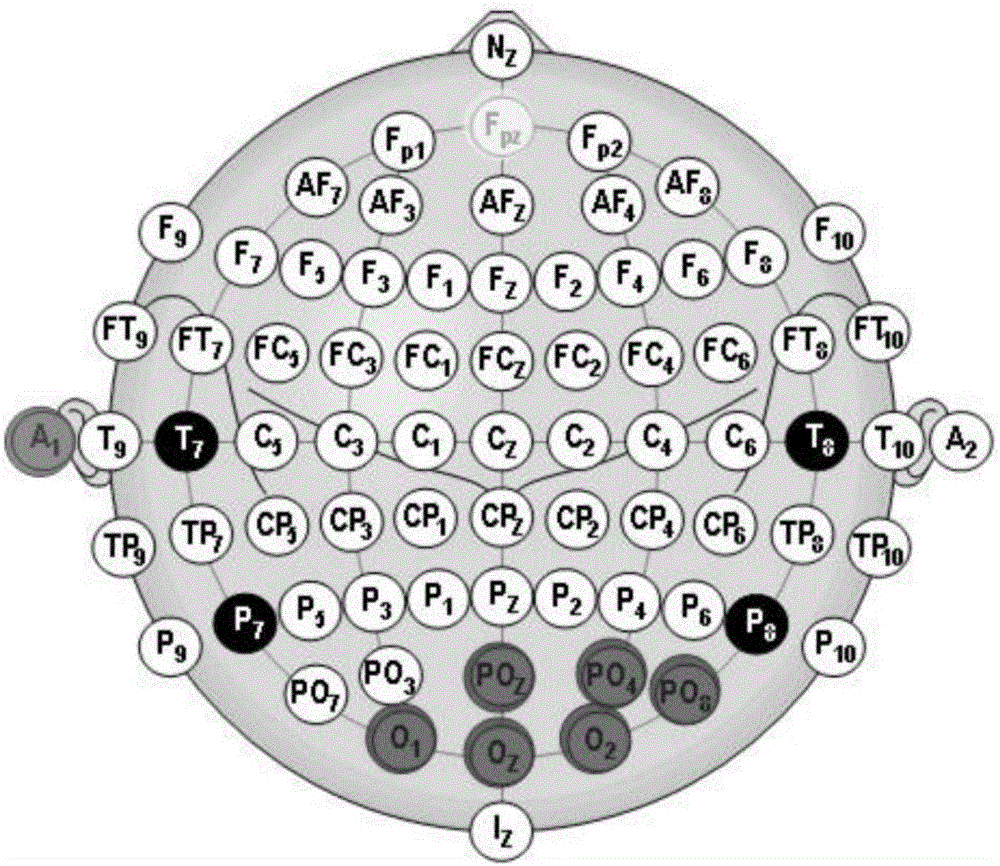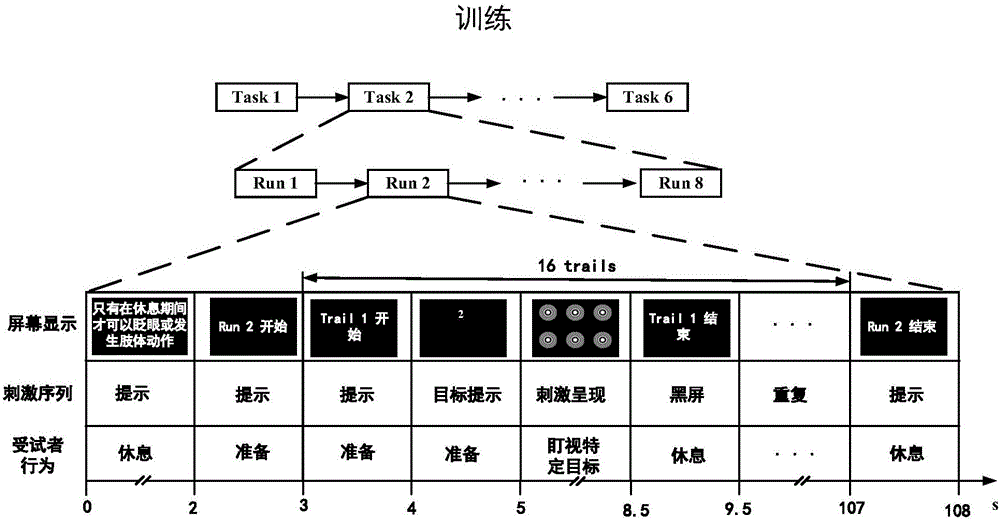Hybrid brain-computer interface method based on steady state motion visual evoked potential and default stimulation response
A visual evoked potential and stimulus response technology, applied in the field of brain-computer interface, can solve the problem of poor response amplitude and other problems
- Summary
- Abstract
- Description
- Claims
- Application Information
AI Technical Summary
Problems solved by technology
Method used
Image
Examples
Embodiment Construction
[0085] The present invention will be further described below in conjunction with the accompanying drawings and embodiments.
[0086] A hybrid brain-computer interface method based on steady-state motor visual evoked potential (SSVEP) and default stimulus response (TSR), including the following steps:
[0087] Step 1: If figure 1 As shown, after putting on the electrode cap, the subject sat in front of the computer, and the subject's head was about 70 cm away from the computer screen. The electrodes are arranged according to the "international 10 / 20 standard lead system", such as figure 2 shown. The electrodes for recording data in the experiment are located in the occipital region of the brain, including ten electrodes O1, Oz, O2, Cz, Pz, POz, PO3, PO4, PO7, and PO8. The reference electrode is located in the earlobe of the left ear, and the ground electrode is Fpz, located on the forehead. Location. At the beginning of the experiment, inject conductive paste into the grou...
PUM
 Login to View More
Login to View More Abstract
Description
Claims
Application Information
 Login to View More
Login to View More - R&D
- Intellectual Property
- Life Sciences
- Materials
- Tech Scout
- Unparalleled Data Quality
- Higher Quality Content
- 60% Fewer Hallucinations
Browse by: Latest US Patents, China's latest patents, Technical Efficacy Thesaurus, Application Domain, Technology Topic, Popular Technical Reports.
© 2025 PatSnap. All rights reserved.Legal|Privacy policy|Modern Slavery Act Transparency Statement|Sitemap|About US| Contact US: help@patsnap.com



